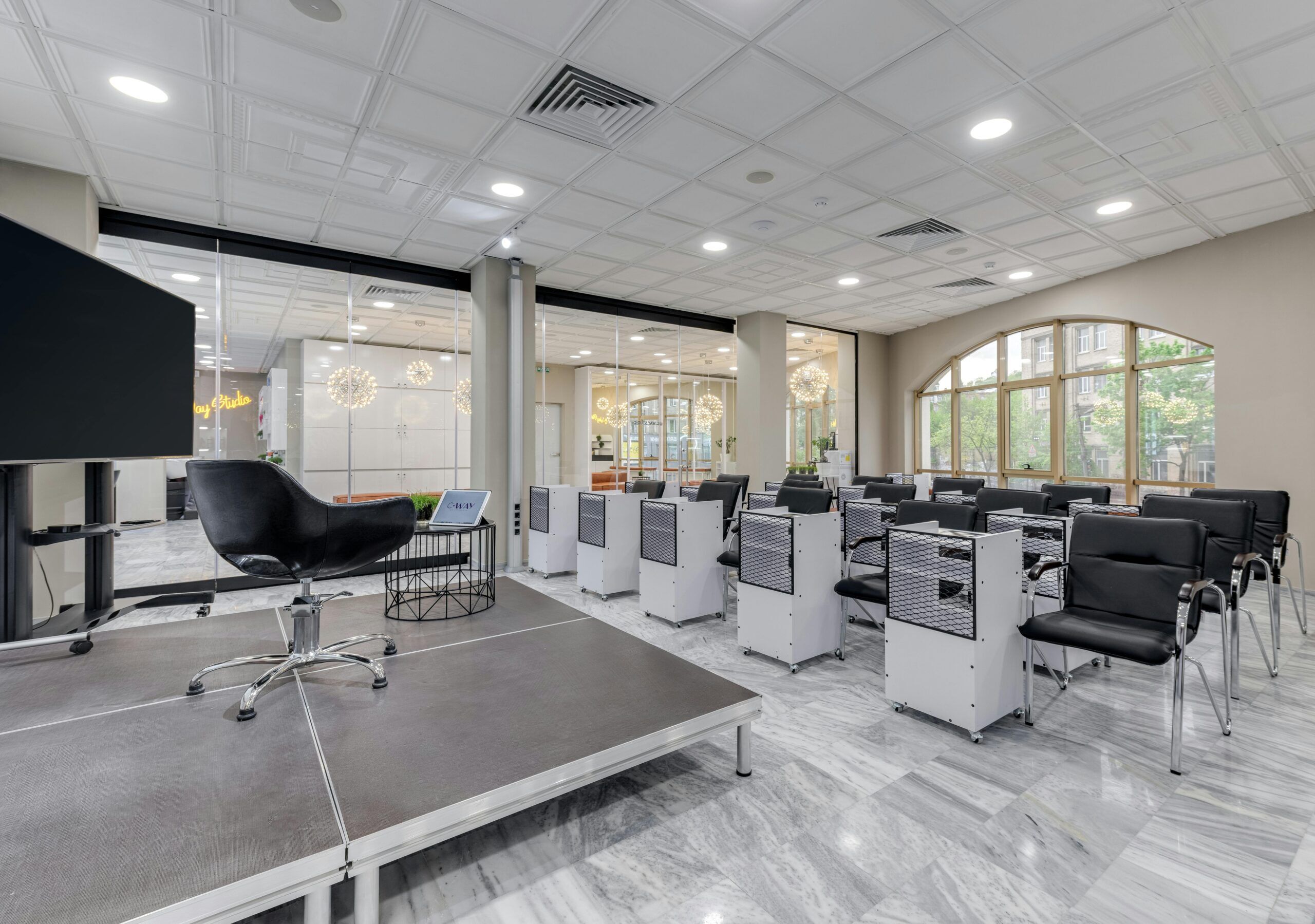After 5 years of facilitating a 3 day training for an industry-leading client, I began to reflect on the factors that have made it such an effective delivery over the years and even through the pandemic, when we converted it to remote format. Now that we’re completely back to in-person training, the following factors are more important than ever to make your training investments pay off.
Creating effective learning environments requires more than just arranging seats and setting up a projector. The physical space directly impacts engagement, learning outcomes, and the overall experience for today’s savvy professionals. This post explores how intentional design elements—like seating, natural light, sound, and technology—can transform learning environments and take your well-constructed curriculum or milestone experience to the next level.
The Impact of Physical Space on Learning
The Value of Natural Light
Natural light significantly boosts focus and performance. Studies show that learners in well-lit rooms experience a 20–26% increase in test scores and report higher energy levels throughout the day. When selecting venues, prioritize spaces with windows that allow natural light to flow in, creating a more welcoming and energizing environment.
Sound and Acoustics
Clear sound is essential for absorbing information. Poor acoustics reduce comprehension by 15%, making it difficult for learners to engage. Prioritize venues with soundproofing or quiet, distraction-free environments to ensure all participants can focus, collaborate, and retain information effectively.
Ergonomic Comfort for Engagement
Comfortable, adjustable seating improves focus and participation by up to 15%. Prolonged discomfort can lead to fatigue, reducing engagement. Prioritize seating that supports posture, allows movement, and accommodates different body types for optimal focus during long sessions.
Designing Space for Collaboration and Interaction
Flexible Seating for Dynamic Learning
A rigid, lecture-style layout stifles interaction. To foster collaboration, use flexible seating arrangements such as U-shaped or circular setups. These configurations enhance group interaction and encourage active participation, improving overall engagement by over 30%. Ensure there’s ample space for breakouts or hands-on activities.
Movement and Space
Learners thrive in environments that allow for movement. Creating designated areas for small group discussions or breakouts fosters creativity and active engagement. Spacious, flexible layouts empower learners to interact and participate more fully.
The Role of Technology in Modern Learning Spaces
Interactive Tools for Engagement
Professional learners benefit from interactive technology that keeps pace with their short attention spans. Tools like real-time polling and virtual whiteboards boost engagement and promote collaboration. Seamless integration of these tools keeps participants active and attentive, ensuring a more effective learning experience.
Reliable Wi-Fi and AV Systems
High-quality audio-visual systems and stable Wi-Fi are non-negotiables. Poor tech can derail an otherwise well-planned session. Ensure that the venue provides robust tech support, including reliable internet, projectors, and microphones, to maintain the flow and comprehension of the learning experience. A common trap even the best facilitators fall into is presuming your voice will carry a room. For a high-quality learning experience, use the room’s audio system, have a sound check to set your levels for the space, and if you have audience participation, consider adding a handheld microphone that can be passed around.
Practical Considerations for HR and L&D Leaders
When selecting learning spaces, ask key questions:
- Does the room offer natural light?
- Is the sound quality optimized for focused learning?
- Is the seating ergonomic and can it be reconfigured for interaction?
- Are technology tools easy to use and venue support staff accessible?
Intentional Space for Effective Learning
Intentional design in learning spaces is critical to creating environments where professionals can thrive. We realize that not every space will contain all of these elements, so we recommend you include as many of these aspects as your budget and space availability allows. By focusing on key elements such as light, sound, ergonomic seating, flexibility, and technology, HR and L&D leaders can foster spaces that encourage collaboration, engagement, and deeper learning that sticks.
Elevate your Leadership Potential
To learn more about intentional space and executive coaching, reach out to Kevin for a consultation.

